Abstract
OBJECTIVES. The effectiveness of air bags was estimated in this study by comparing driver fatalities in frontal crashes with driver fatalities in nonfrontal crashes, for cars with air bags and manual belts and cars with manual belts only. METHODS. Fatal Accident Reporting System data for drivers fatally injured during 1985 to 1991 in 1985 to 1991 model year cars that were equipped with air bags in or before model year 1991 were analyzed. RESULTS. Driver fatalities in frontal crashes in air bag cars were 28% lower than those in comparable cars with manual belts only. This percentage was used for estimating the overall fatality reduction in air bag cars. The reduction was greater in large cars (50%) than in midsize cars (19%) or in small cars (14%). Air bags reduced driver fatalities in frontal crashes involving ejection by about 9%. Fatalities in frontal crashes among drivers who were reportedly using manual belts at the time of the crash were reduced by about 15%. The comparable reduction among drivers who were reportedly not using manual belts was 31%. CONCLUSION. It was estimated that air bags reduced the total number of all driver fatalities by about 19%.
Full text
PDF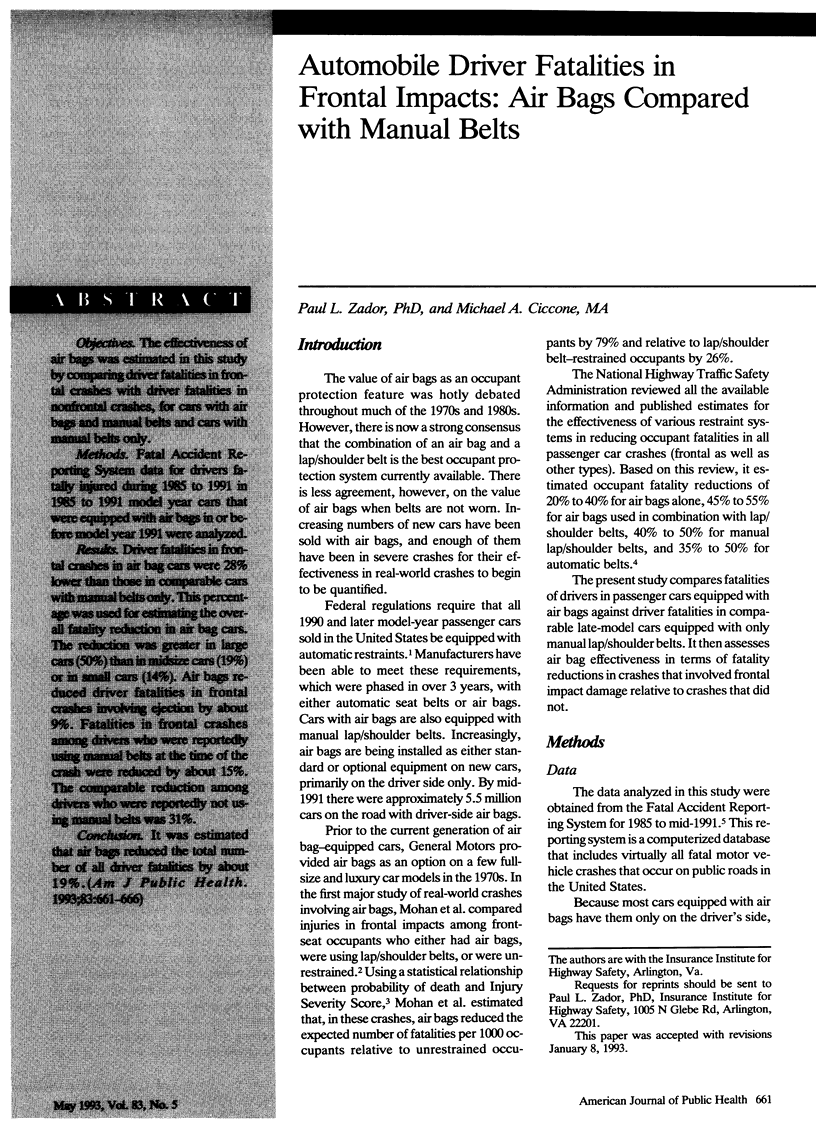
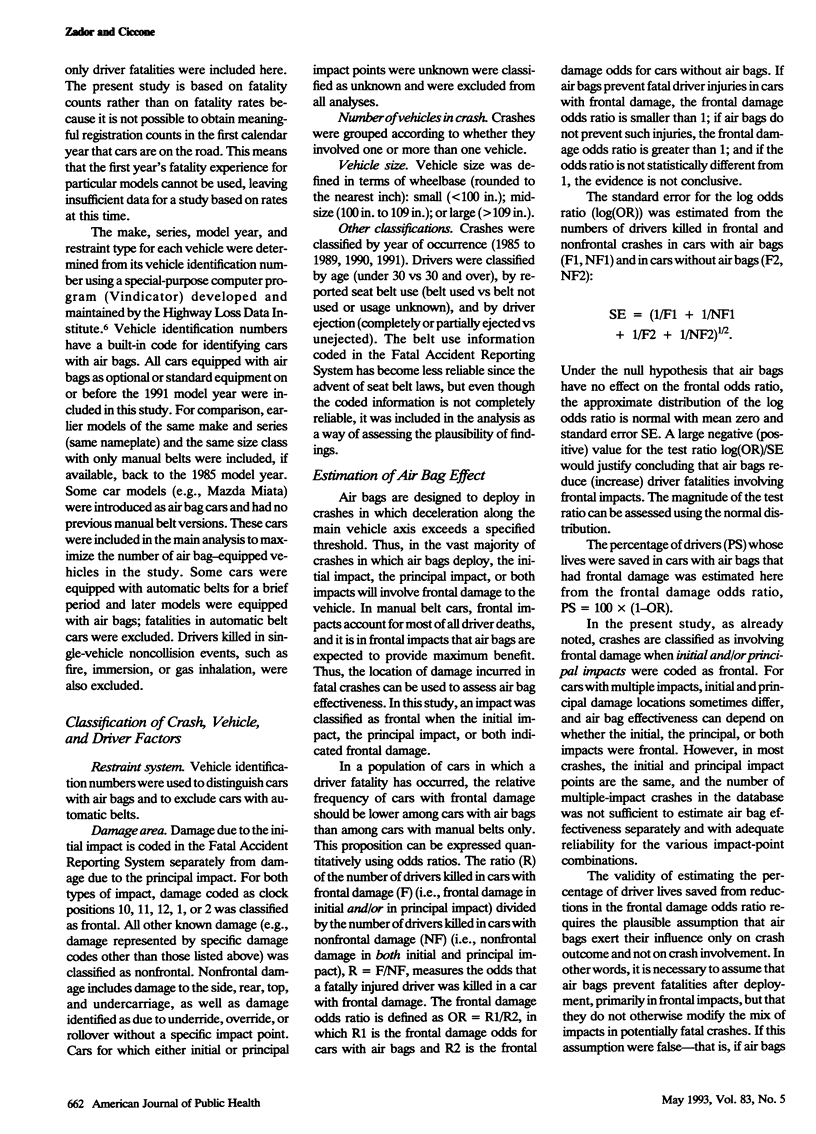
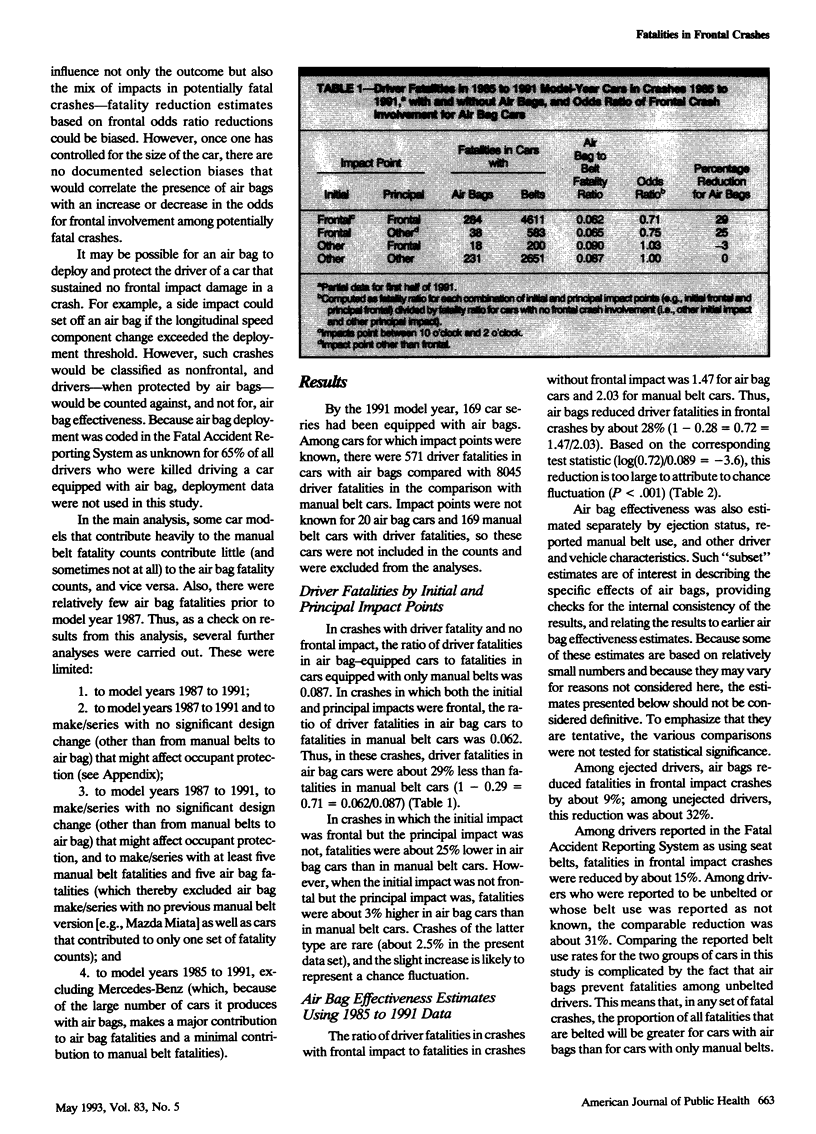
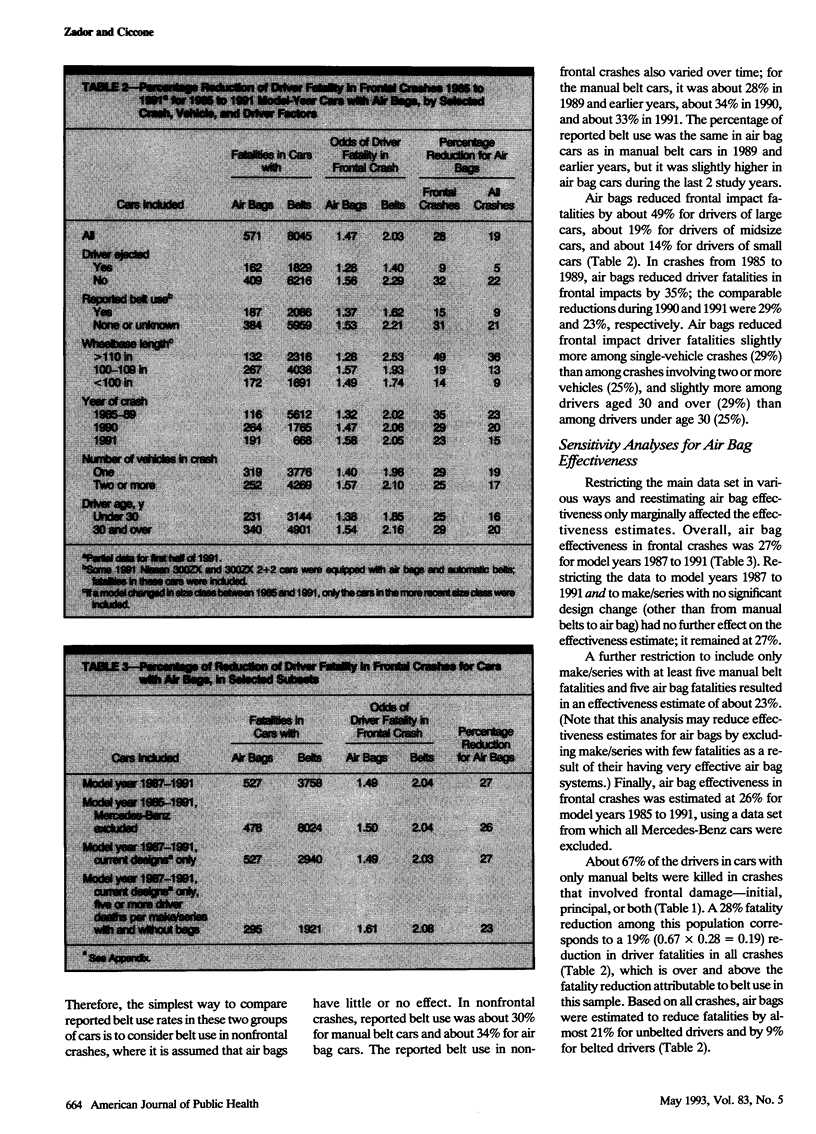
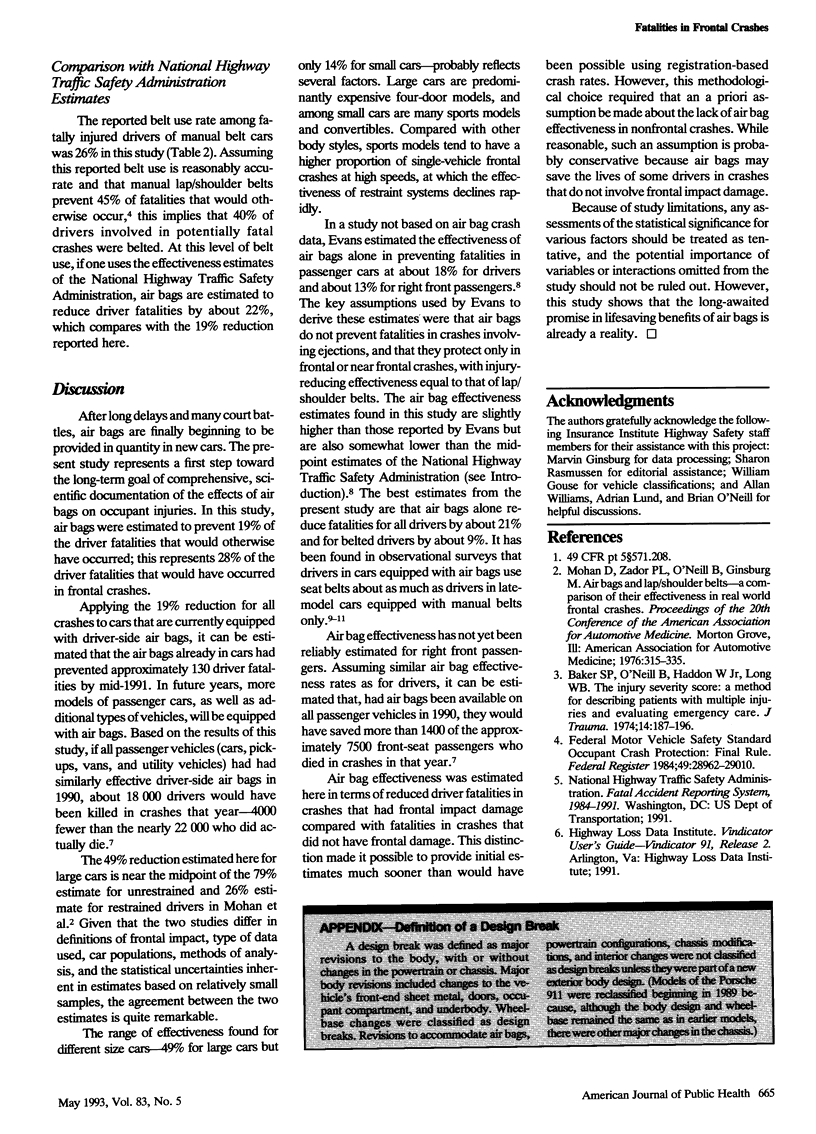

Selected References
These references are in PubMed. This may not be the complete list of references from this article.
- Baker S. P., O'Neill B., Haddon W., Jr, Long W. B. The injury severity score: a method for describing patients with multiple injuries and evaluating emergency care. J Trauma. 1974 Mar;14(3):187–196. [PubMed] [Google Scholar]
- Williams A. F., Wells J. K., Lund A. K. Seat belt use in cars with air bags. Am J Public Health. 1990 Dec;80(12):1514–1516. doi: 10.2105/ajph.80.12.1514. [DOI] [PMC free article] [PubMed] [Google Scholar]


